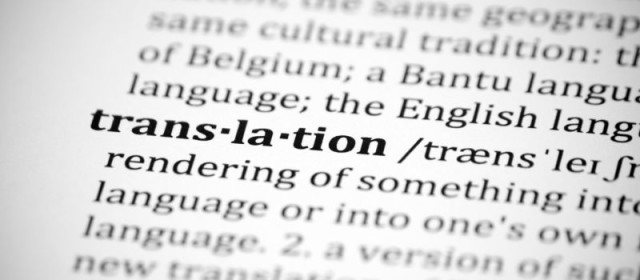[LINGUISTICS] Teaching Translation with Literary Works
Translation is a broad field and can be considered as the tool for pedagogical, socio-cultural and socio-textual communication. House (2009) defined the act of translation as “the replacement of an original text with another text” (p.3). Judging from that perspective then, this textual replacement activity can be concluded into three basic types which are: (A)Interlingual translation, the exact rendering into the target text; (B)Intralingual translation, the process of rewording making variety into one another; and (C)Intersemiotic translation, a transmutation within the translation process into another media. (House, 2009, p.4). When focusing on a specific field of literary works such as poems and prose then the concept of these works will fall into the type of Intralingual translation due to their characteristic in implementing substitution and rewording or rather, domestication of a source text into a target text by possible figurative language or cultural lexical items. Intralingual will definitely fall into interpretation based on the focus on variable. This perspective is conditioned by cultural factors, and they depend on cultural presuppositions (House, 2009, p. 21). This perspective leads the translation activity, enabling it to reword or deconstruct a source text into the target text by focusing on the meaning rather than the word itself. Defining a meaning of a text may lead to prominent confusion in finding the equivalence in the meaning which can be analyzed solely on the type of discourse research as Hatim proposed in Teaching and Researching Translatoon (2001). This essay itself will focus on a preceding essay from Budi Hermawan and Susi Septaviana from Universitas Pendidikan Indonesia cntitled, ‘The Agony of Teaching Translation Literary Works’ (2011).
Hermawan and Septaviana (2011) demonstrated the agony of teaching translating literay works in their proceeding paper of TransCon 2011. They focused on the findings of how literary works, basically poetry and prose, where later on will be described within their own researched methods and thus discovered imminent challenges of the field and of course later on, proposed a possible solution from the research itself. The challenges from this essay which Hermawan and Septaviana proposed are the adversities that the students of UPI Bandung sixth semester faced in translating literary works especially poetry and prose in class. These difficulties led them to proposed two choices in translating the source texts: “to retain the features of the text but may have to sacrifice the content or to retain the content, hence the meaning, and sacrifice the features of the text.” (2011, p. 70). These are problematic enough according to Hermawan and Spetviana findings to the the socio-cultural and socio-textual differences. The examples found within the essay such as translating an English text with metaphorical concept into Indonesian language. This will create a certain barrier in translating the words and thus interpretation is needed – which may lead to rewording.
The challenges from the students are classified more detailed in terms of limited vocabularies of the students, and the ability to choose the right expression for the translation, the ability on how to maintain the original text features such as rhymes and how to understand the underlying meaning within the literary works. (Hermawan & Septaviana, 2011). This essay can be easily research by using Hatim’s Discourse contexts and projects, mostly translating a source text into a target text by paying attention in its culture, politic, poetic and discourse manipulation (or notional context – metaphorical and socio-textual ambiguity). A word, phrase or even an idiom from culture A may be different or even does not exist in let say culture B nor C (vice versa). This challenge can be rebutted with appropriating the original, a concept of manipulating the structure and texture so that an appropriation of an original text may be readable for the target text. (Hatim, 2001, p. 209). Defining a true meaning can also be translated in a translator keep the culture intact ‘by invoking a variety of perspective (cultural and linguistic)’ (Hatim, 2001, p.207) which of course will lead to the true expression of the meaning identity rather than textual identity.
Overall, what Hermawan and Septaviana have discovered in their findings are that ‘it is crucial the make fit the students need and the level of English to be use as materials in the class’ (2011, p.69) (and making the appropriate assessment within the material) so that the translating literary works will make way for a successful result. So in the end, the agony which they defined are no more that the possible in capabilities from the sixth semester students that they analyzed and also how to find the correct concept in teaching translating literary works in general. Hatim (2001) defined that textual conventions are indeed interesting (p. 191), especially if a translator is doing a translation of a literary works because the challenge is not just about making a translation or even doing a translation activity but, the goal of the socio-cultural and socio-textual accurate and ideally readable for the target reader language. The challenges are tantalizing as well as the results of this research in literary works’ translating activity.
REFERENCES
Hatim. B. (2001). Teaching and Researching Translation. English: Pearson Education Limited.
Hermawan, B. & Septaviana, S. (2011). The Agony of Teaching Translating Literary Works, Cultures Merging: Tackling the Lingustic (Un)translatability (pp. 69-75). Jakarta: Atma Jaya Catholic University of Indonesia.
House, J. (2009). Translation. Oxford: Oxford University Press.




Comments :